QCD - Confinement & Asymptotic Freedom & Quark Detection
The part of the Standard Model that describes the strong interactions is called quantum chromodynamics (QCD). The theory of quarks and gluons is known as QCD. Quarks are able to emit and absorb gluons thanks to a new charge they carry termed colour. (Though the "colour" of QCD should under no circumstances be mistaken with the colours of light, this is where the name chromodynamics originates.) The quarks have an intrinsic rotational momentum of one-half Planck's constant in units of spin, and they are also electrically charged fermions like electrons. The gluons, like photons, are spin-one bosons and are electrically neutral. A nonabelian gauge theory is made up of the fields of quarks and gluons together.
In QCD, quarks interact by exchanging gluons in a manner similar to how electrons interact by exchanging photons, which are tiny units of light. The gluons move at the speed of light and have no mass, much like photons. Gluons can emit and absorb more gluons because, unlike photons, they carry the same colour charge that creates them. Thus, the analysis of the resulting strong force is more challenging than that of the electromagnetic force.
The QCD coupling αs(Q), which regulates the likelihood of a quark producing a gluon and results in forces between quarks, is a useful indicator of the strength of the strong force. The momentum that the emitted gluon, designated by the letter Q, carries affects the QCD coupling. Asymptotic freedom refers to the variation where the strong coupling is substantial for extremely low-momentum gluons and shrinks as the momentum grows. αs(Q) is only about 0.1 for the highest-momentum gluons that can be created in contemporary accelerators, but it can reach rather large values for momentum transfers that are typical of nuclear interactions. Processes over short timeframes, which often include a few gluons, are simpler to study than processes over long times, which typically involve many gluons, because to asymptotic freedom.
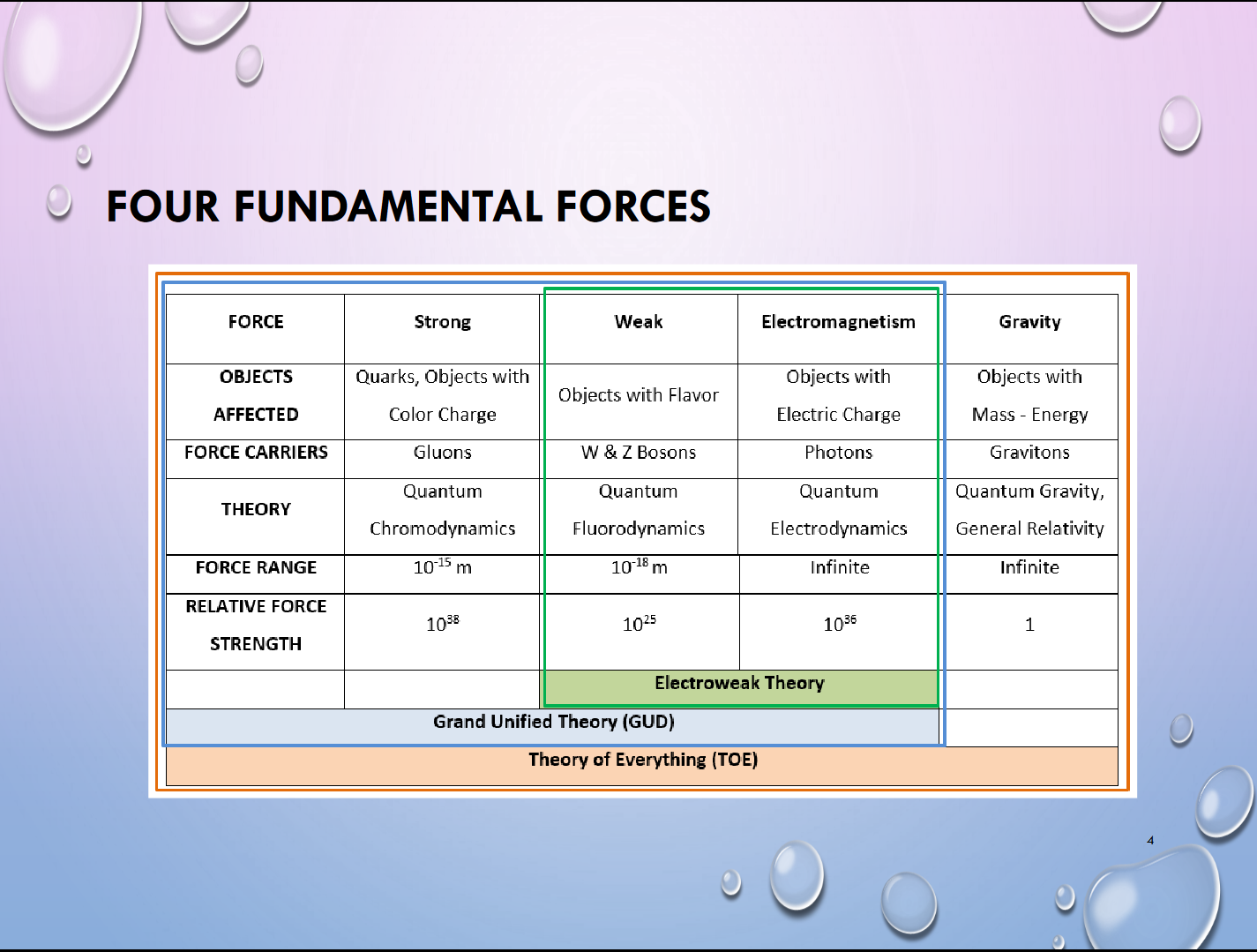
SOME HISTORY OF QUARKS DETECTION
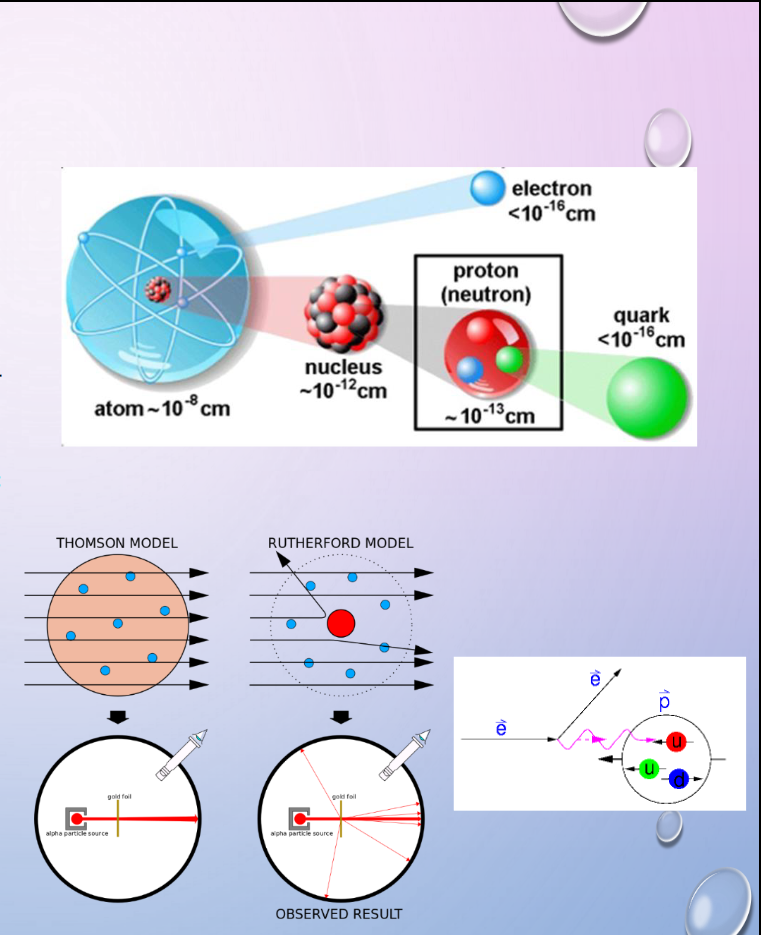
- THE FIRST QUARKS WERE DISCOVERED IN DEEP INELASTIC SCATTERING EXPERIMENTS AT SLAC IN 1970
-
QCD THEORY WAS FINALIZED BY THE END OF
1974 (MURRAY GELL-MANN, OTHERS)
- MESONS (PIONS) WERE FIRST THEORIZED TO BE RESPONSIBLE FOR THE STRONG FORCE BY HIDEKI YUKAWA
- GLUONS WERE FOUND TO BE RESPONSIBLE FOR THE FUNDAMENTAL STRONG FORCE
- YANG-MILLS FIELD THEORY GENERALIZED ABELIAN FIELD THEORY TO NON-ABELIAN
MORE ABOUT SLAC (STANFORD LINEAR ACCELERATOR CENTER)
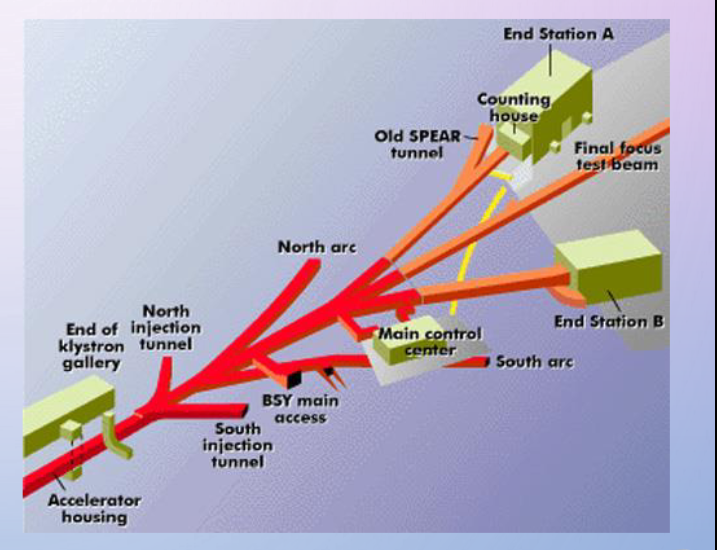
- AN ENORMOUS VERSION OF RUTHERFORD'S SCATTERING EXPERIMENT ACCELERATED INTENSE BEAMS OF ELECTRONS UP TO 20 GEV AT LIQUID HYDROGEN AND DEUTERIUM TARGETS IN END STATION A
- RESEARCHERS OBSERVED ELECTRONS SCATTERING AT WIDE ANGLES MUCH MORE FREQUENTLY THAN EXPECTED. ANALYSES OF THE DISTRIBUTION OF THE SCATTERED ELECTRONS MEASURED IN THE MAGNETIC SPECTROMETERS IN END STATION A REVEALED THREE SCATTERING CENTERS WITHIN THE NUCLEON.
COLORS AND FLAVORS
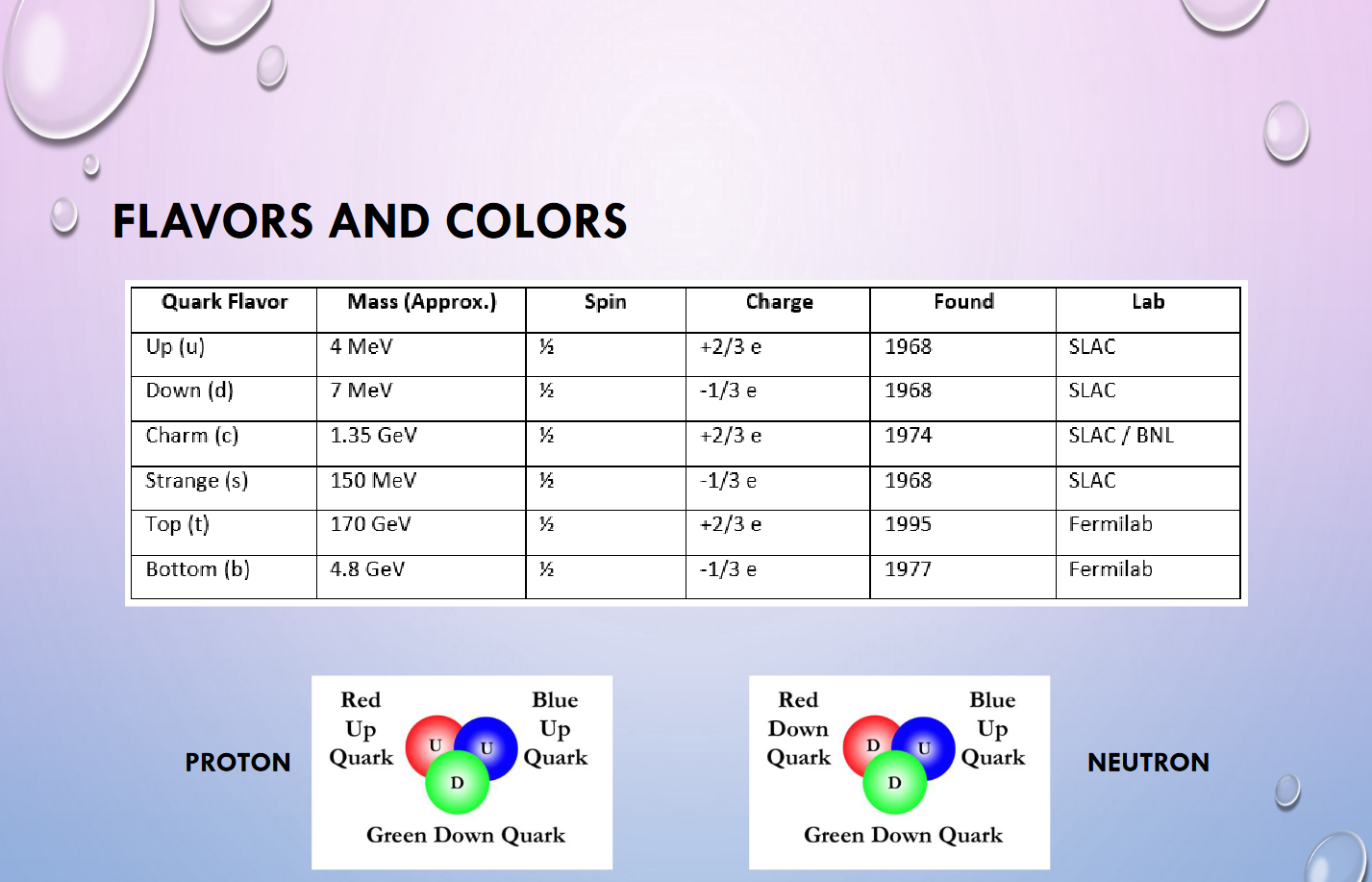
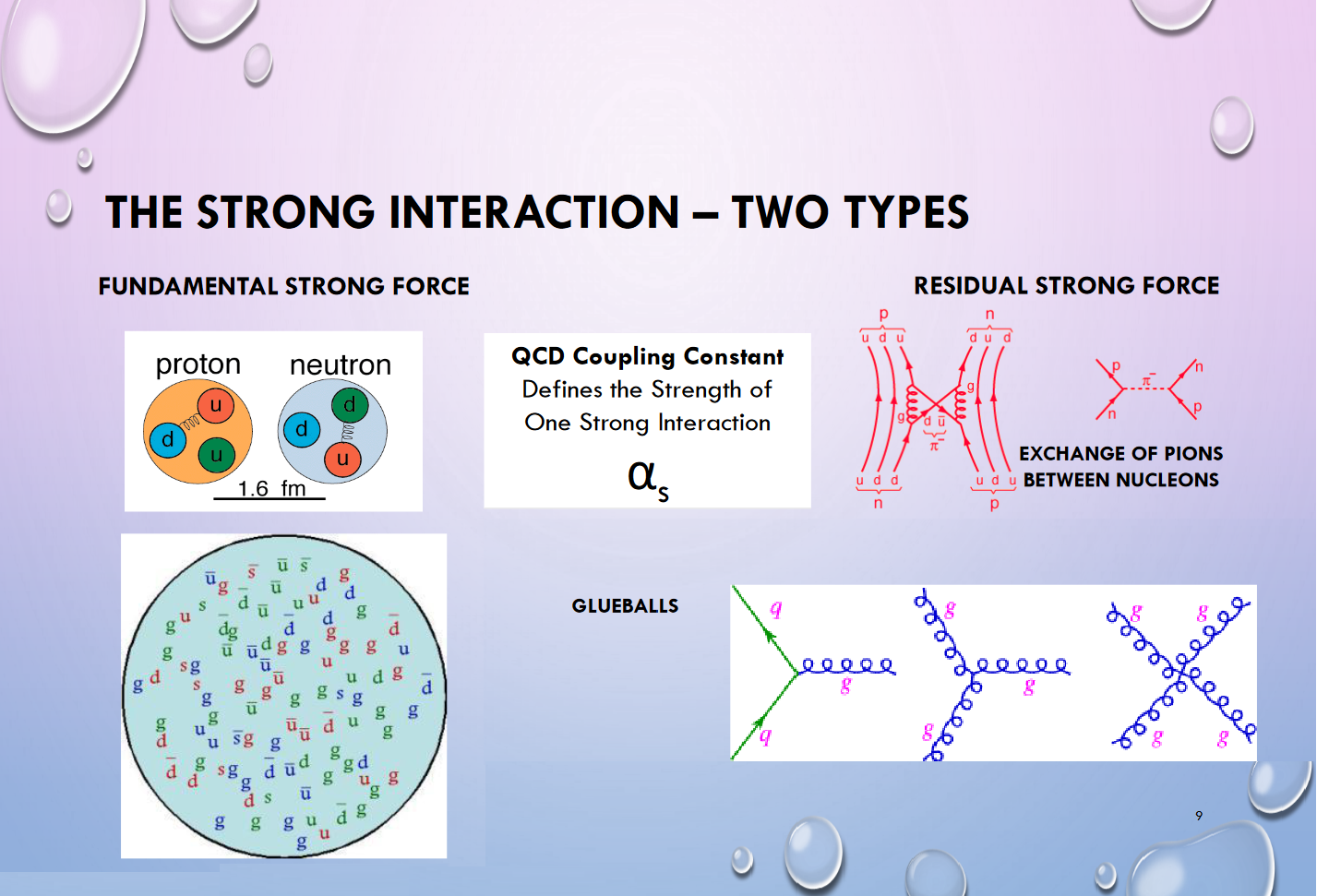
QCD vs QED
- THERE ARE TWO KEY FEATURES THAT DISTINGUISH QCD FROM QED
-
QUARKS INTERACT MORE STRONGLY THE FURTHER THEY ARE APART, AND MORE WEAKLY AS THEY
ARE CLOSE BY - ASYMPTOTIC FREEDOM
- NO OTHER FORCE DOES THIS!
- THINK BACK TO THE EQUATIONS FOR GRAVITY AND ELECTROMAGNETISM
- 1/R2 TERMS WHERE R IS THE DISTANCE BETWEEN THE OBJECTS
-
GLUONS INTERACT WITH THEMSELVES BECAUSE THEY ALSO CARRY COLOR CHARGE
- PHOTONS ARE NOT ELECTRICALLY CHARGED AND DO NOT INTERACT WITH EACH OTHER
- IF THEY DID - THINK ABOUT THE CONSEQUENCES!
-
IN ADDITION
- QED HAS TWO TYPES OF CHARGE - ELECTRIC (POSITIVE, NEGATIVE)
- QCD HAS THREE TYPES OF CHARGE - COLOR (RED, BLUE, GREEN)
STRANGE PROPERTIES
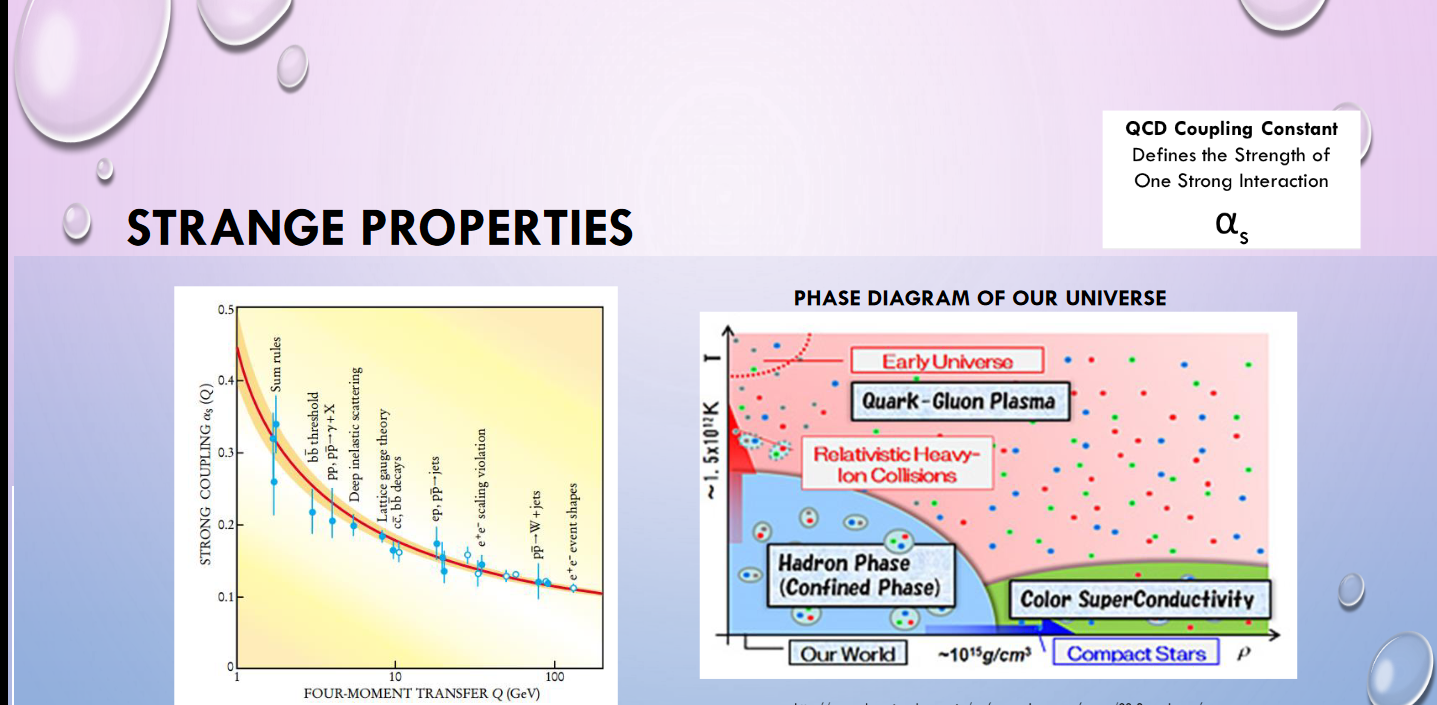
- CONFINEMENT - THE STRENGTH OF THE STRONG INTERACTION INCREASES AS QUARKS ARE PULLED FARTHER AWAY FROM EACH OTHER. ONLY COLORLESS STATES OF QUARKS EXIST.
- ASYMPTOTIC FREEDOM - THE STRENGTH OF THE STRONG INTERACTION DECREASES AS QUARKS ARE PUSHED CLOSER TOGETHER
QUARK DETECTION
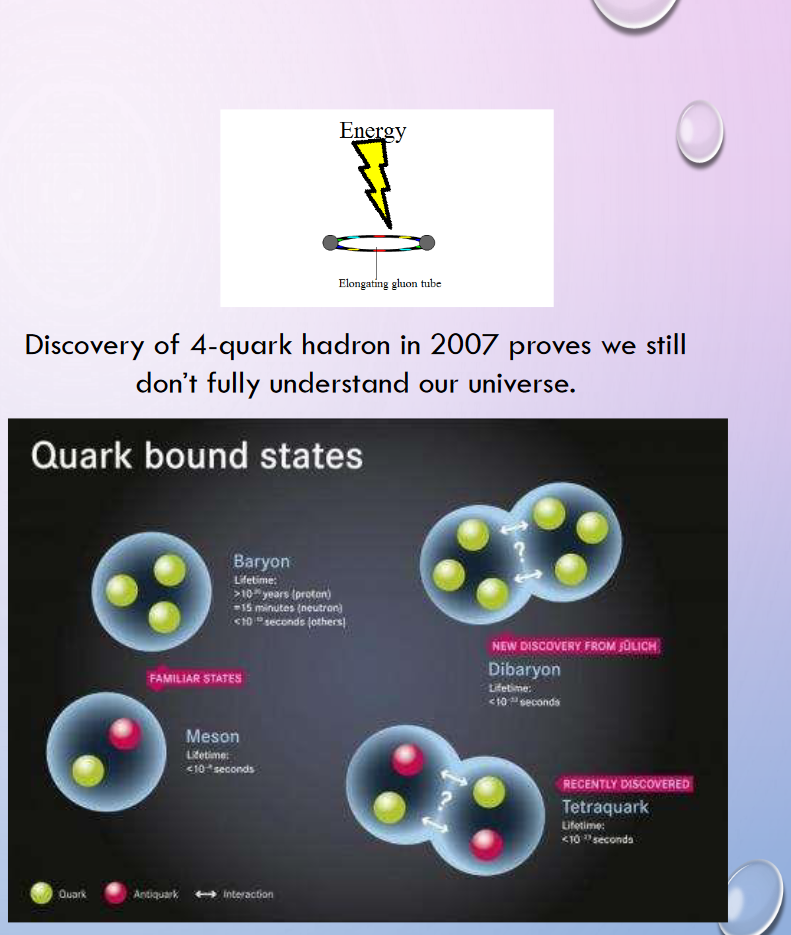

In studies at the collider, any fragmented It is impossible for coloured particles to exist in solitary, unstructured because of confinement They must thus produce other coloured items. surrounding them to balance the colour of the net charge. These result in the "jets" that detectors pick up.
